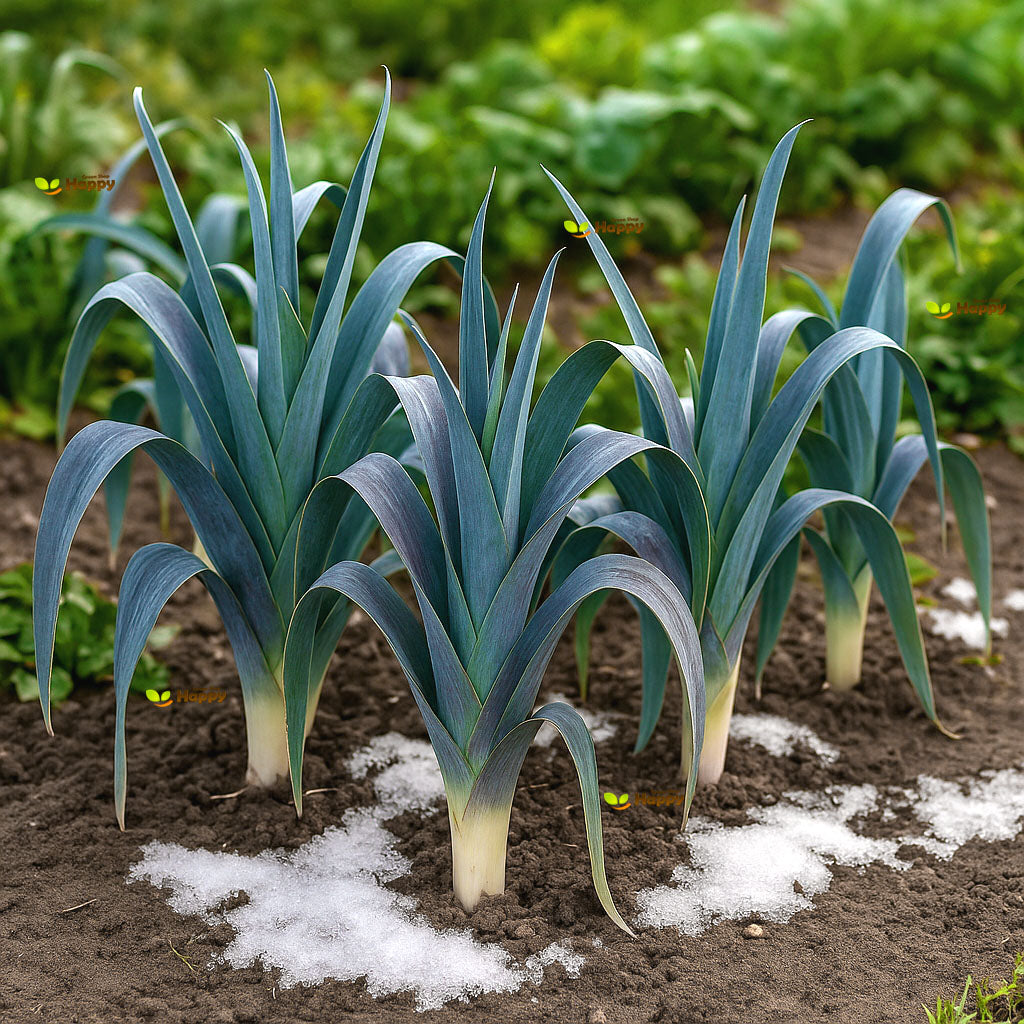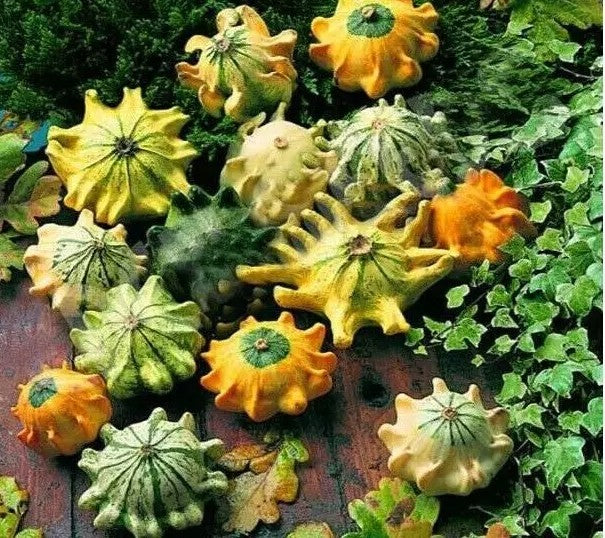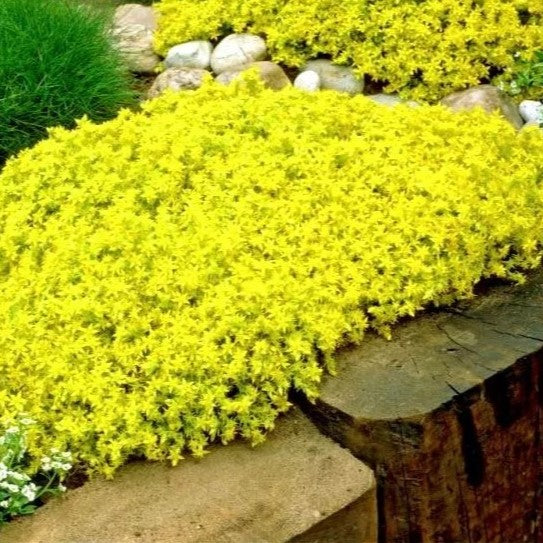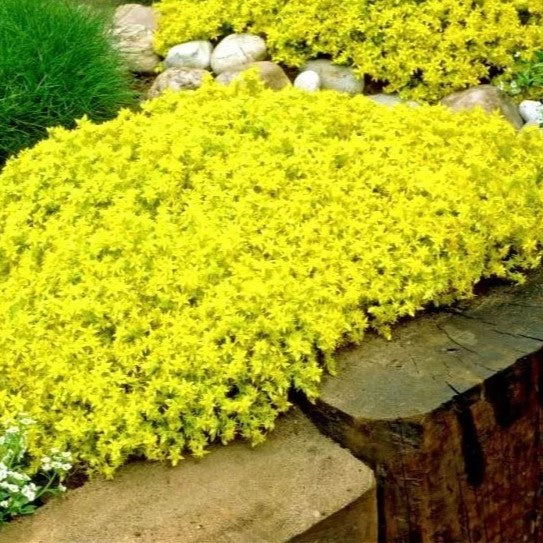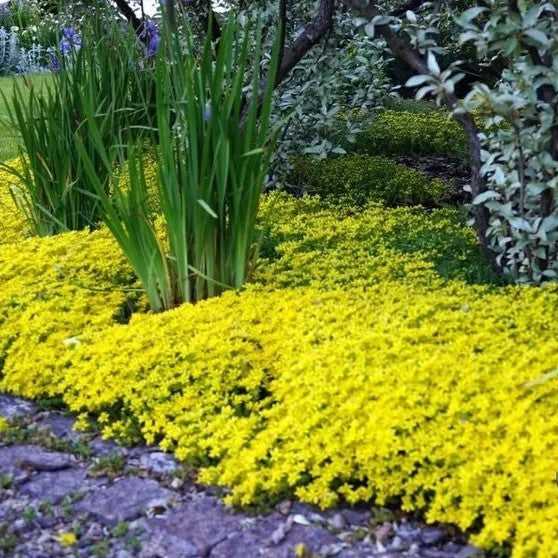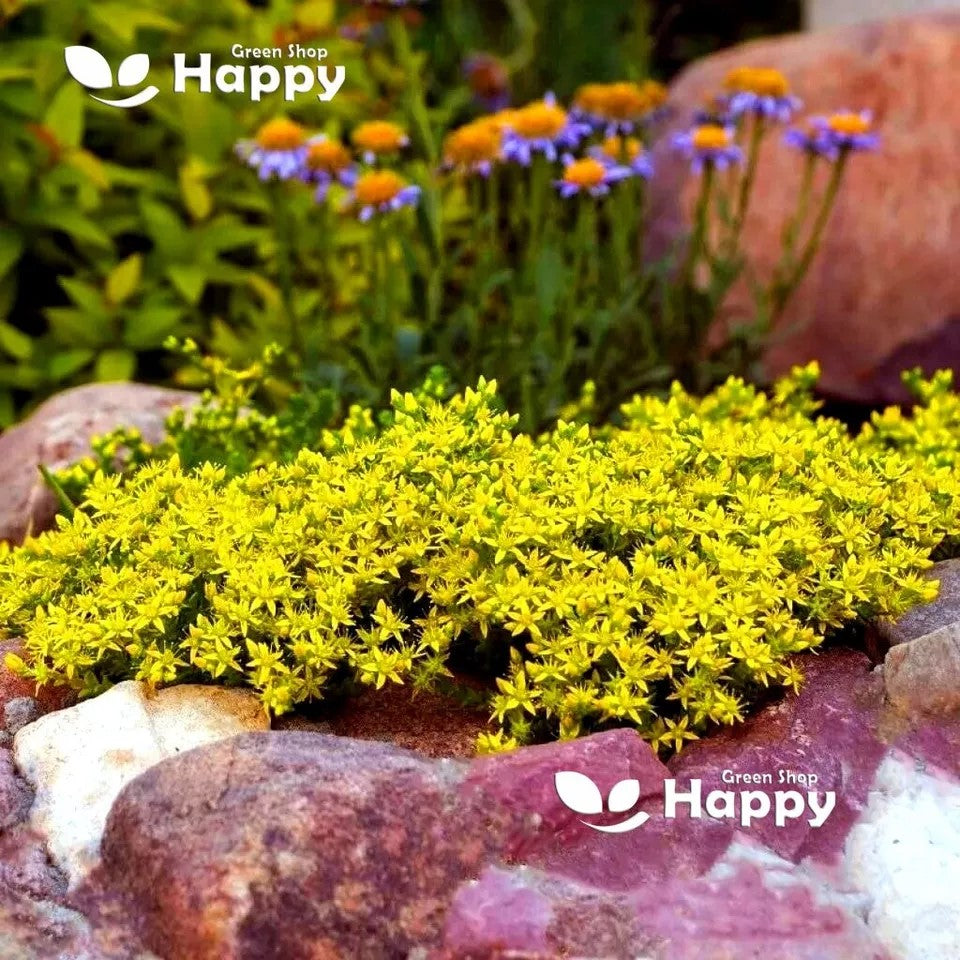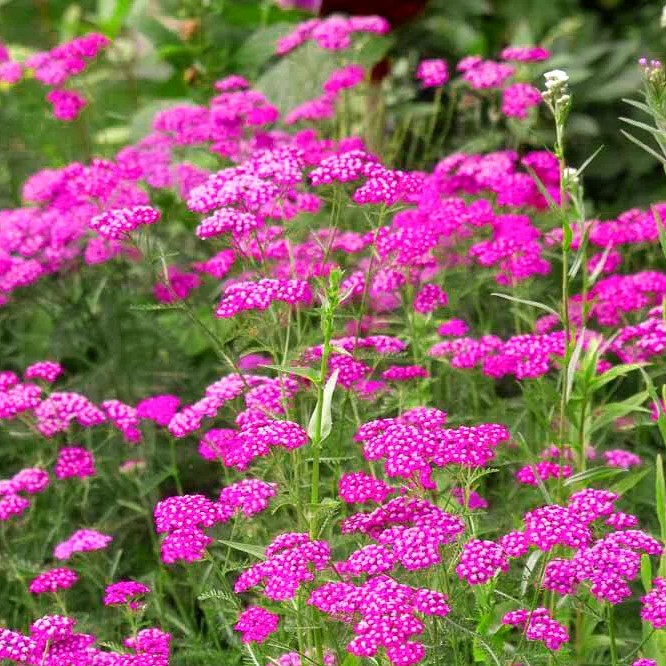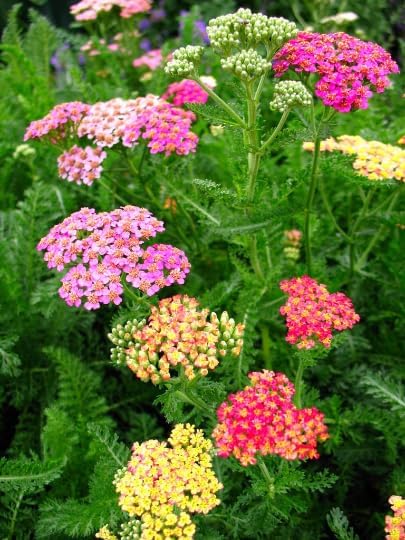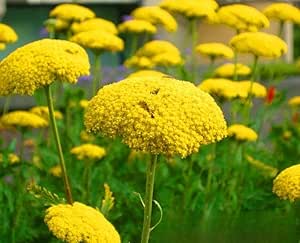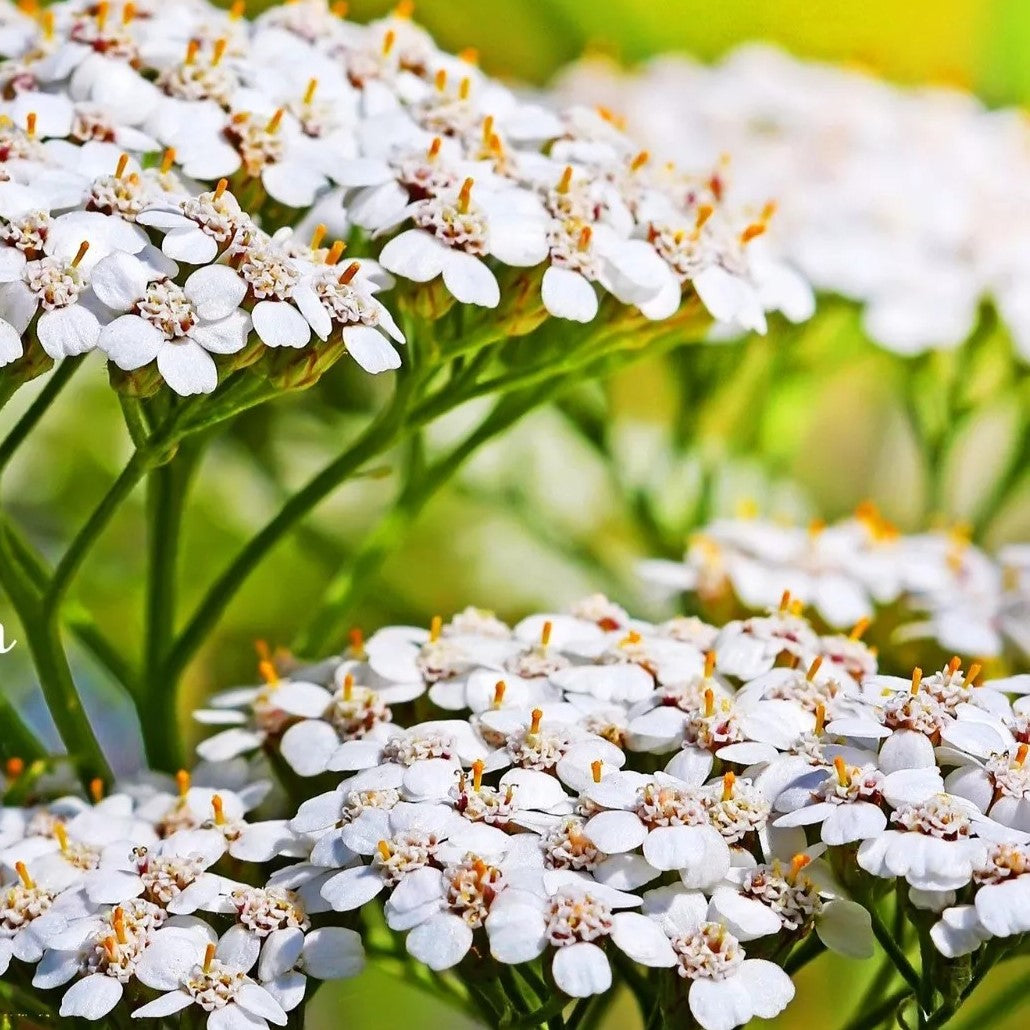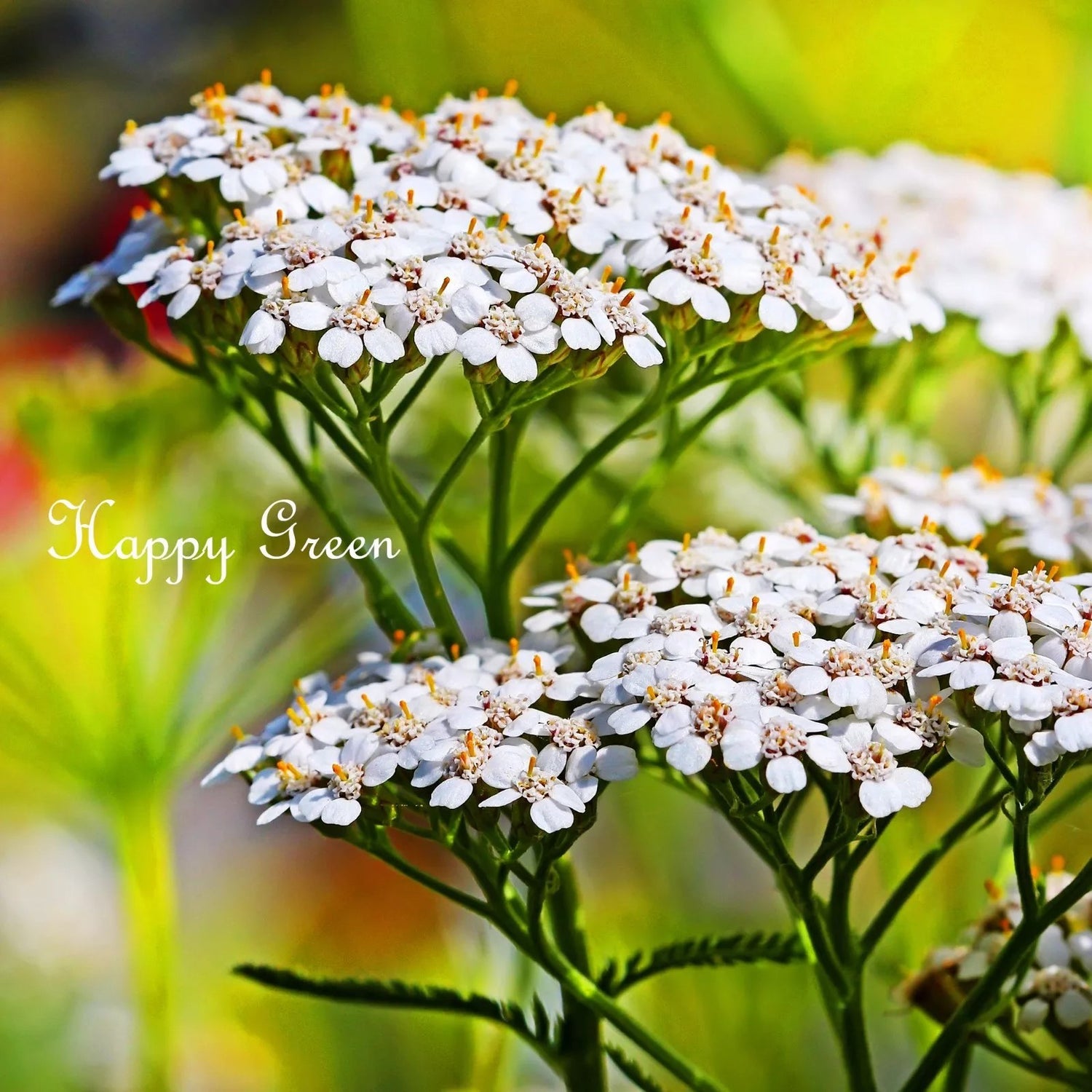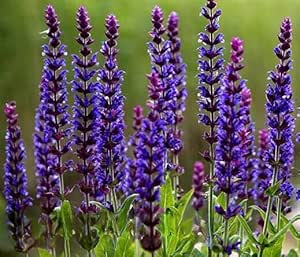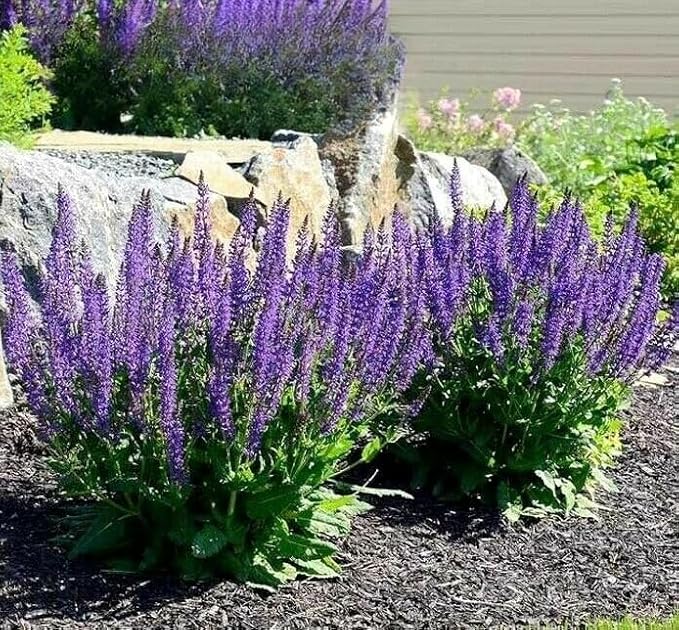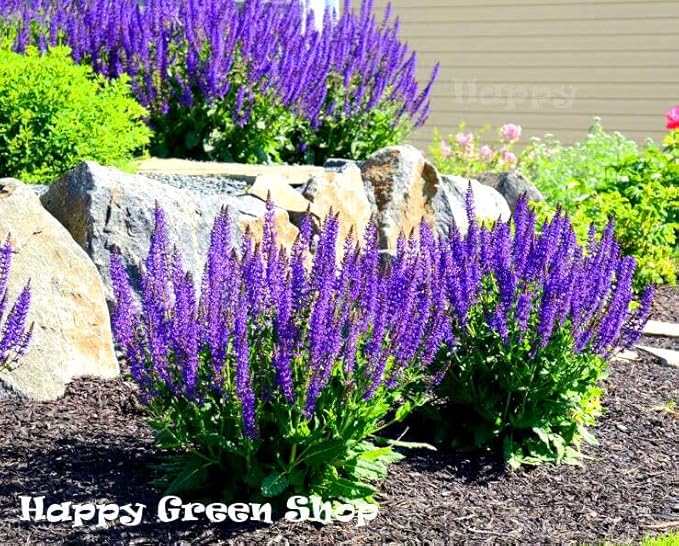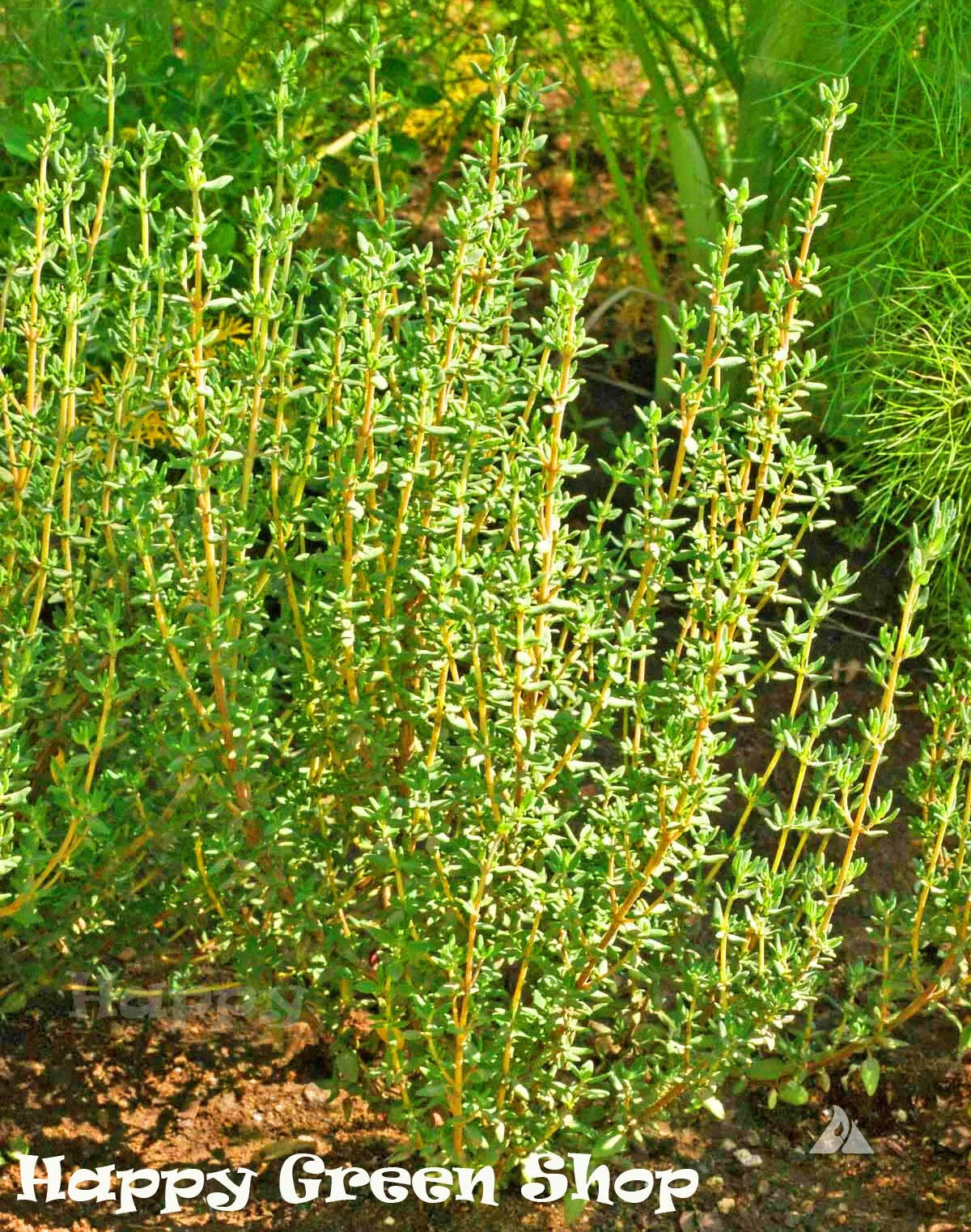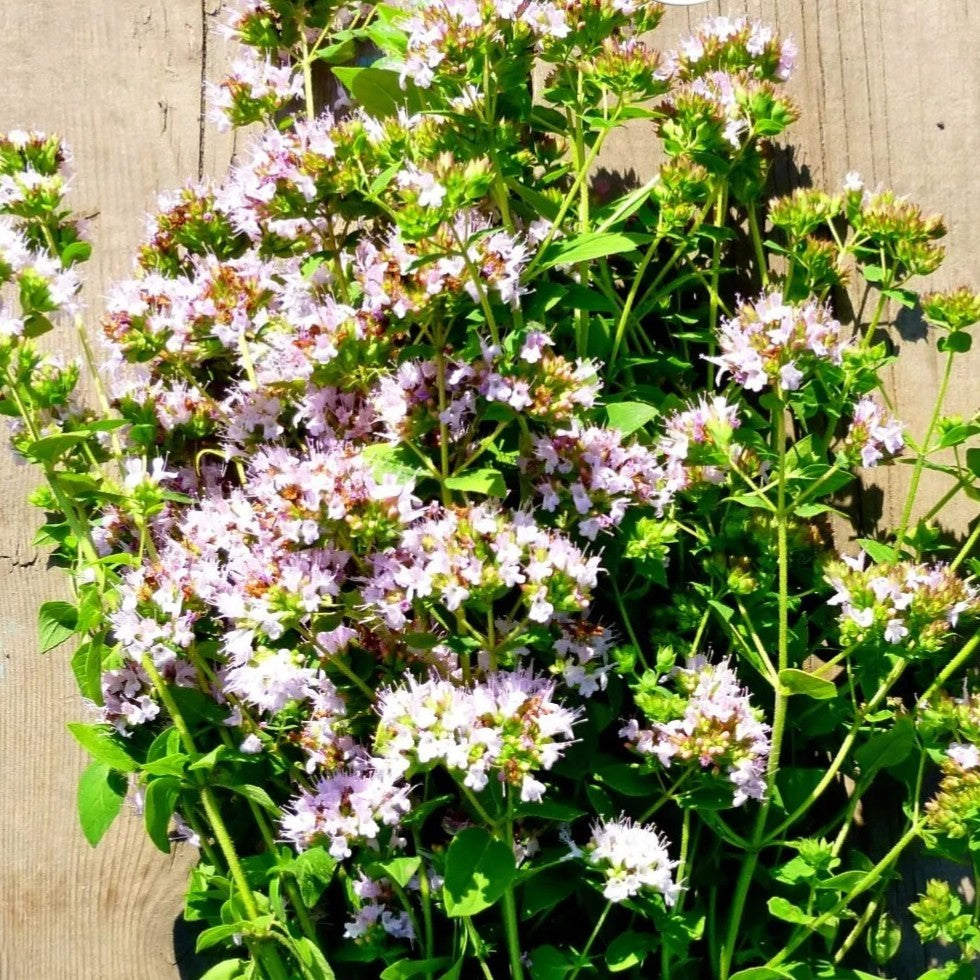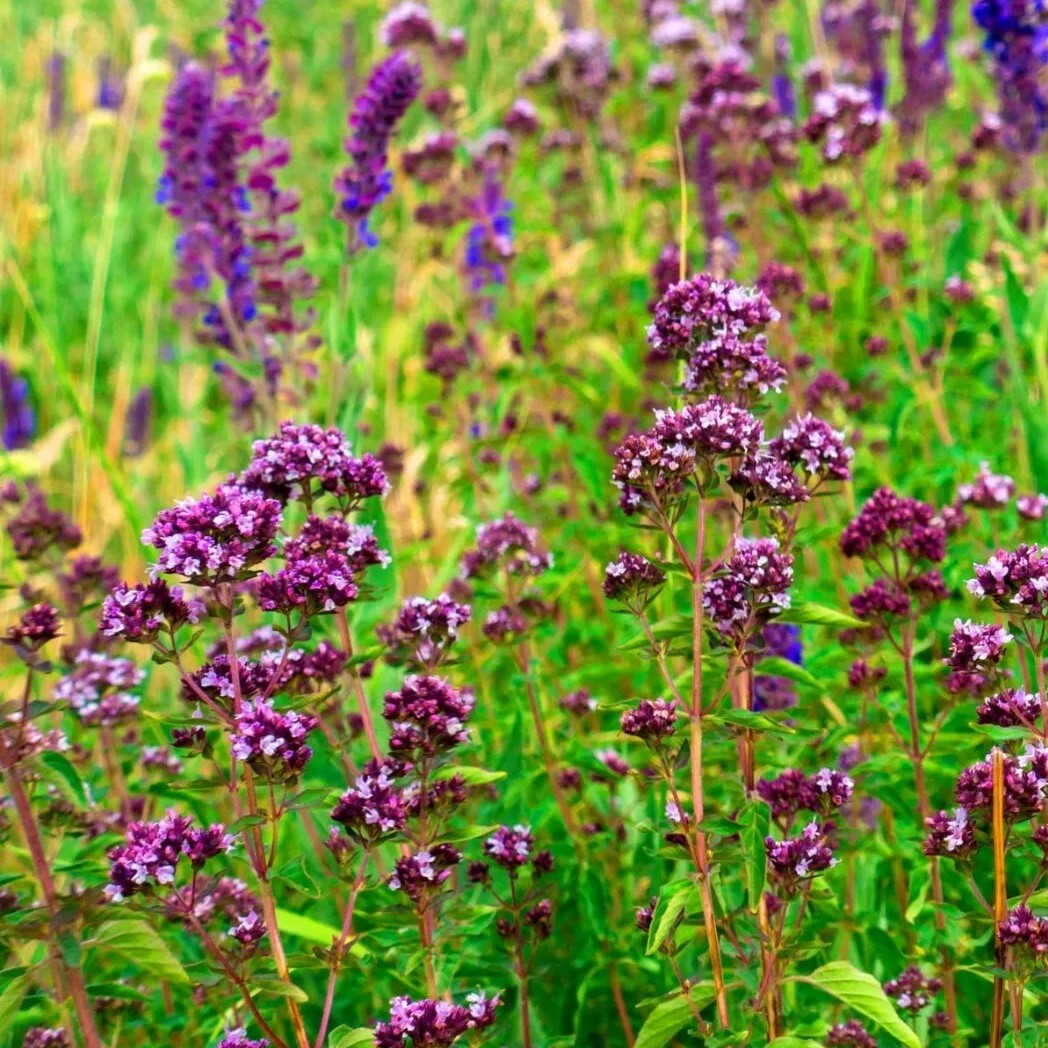Sort by:
224 products
224 products
Discover the uniqueness
Experience the delightful flavor and health benefits of Herbal Blends.
Yellow Stonecrop Seeds (Sedum acre)
Bring bright, low-maintenance charm to your garden with Yellow Stonecrop (Sedum acre). This hardy succulent produces dense mats of tiny, star-shaped yellow flowers over fleshy green foliage, creating a vibrant groundcover that thrives in sunny, well-drained spots. Perfect for rock gardens, borders, and container planting, it’s an ideal choice for gardeners seeking easy-care, drought-tolerant plants.
How to Grow
-
Sow directly outdoors in spring or autumn.
-
Use well-drained soil in a sunny location.
-
Scatter seeds thinly on the soil surface and press lightly without covering.
-
Keep soil lightly moist until germination (14–21 days).
-
Once established, Yellow Stonecrop requires minimal watering.
-
Trim back if needed to maintain neat growth and encourage denser mats.
Key Features
-
Tiny, star-shaped yellow flowers over fleshy green foliage
-
Hardy, low-maintenance perennial groundcover
-
Thrives in poor, dry soils and sunny locations
-
Ideal for rock gardens, walls, and containers
-
Drought-tolerant and long-lasting
Ideal For
-
Rock gardens and sunny borders
-
Container and patio planting
-
Groundcover for dry or poor soils
-
Pollinator-friendly landscapes
Sowing
-
Best time: Spring or autumn
-
Germination: 14–21 days
-
Sow thinly on soil surface and press lightly
-
Prefers full sun and well-drained soil
Quick Tip
-
Allow mats to spread naturally for a dense, vibrant groundcover that blooms year after year.
Yellow Iris – Seeds
(Iris pseudacorus)
The Yellow Iris (Iris pseudacorus) is a striking perennial, known for its large golden-yellow blooms and elegant sword-like foliage. Naturally found along riverbanks and ponds, it thrives in moist to wet soil, making it a perfect choice for water gardens, bog gardens, or pond edges. In late spring to early summer, it produces showy flowers that attract pollinators and provide a beautiful contrast to lush greenery. Hardy and low-maintenance, this iris is both ornamental and beneficial for wildlife habitats.
Key Features
-
Type: Perennial, aquatic/marginal plant
-
Height: 80–120 cm
-
Spread: 40–60 cm
-
Flowering: May–July
-
Position: Full sun / partial shade
-
Soil: Moist, fertile; thrives in boggy or wet conditions
Ideal For
-
Pond edges, water features, and wetlands
-
Wildlife and naturalistic gardens
-
Cottage and perennial borders (in moist soil)
-
Attracting bees and butterflies
Sowing & Growing
-
Sow indoors/outdoors: Autumn–Spring
-
Pre-treatment: Seeds benefit from stratification (exposure to cold for 6–8 weeks) before sowing.
-
Germination: Can be slow and irregular (1–3 months).
-
Sow depth: Cover lightly with compost and keep moist.
-
Transplanting: Move seedlings to permanent positions when large enough, ensuring soil remains moist.
Yarrow ‘Milfoil Cerise Queen’ – Seeds (Achillea millefolium)
Yarrow ‘Milfoil Cerise Queen’ (Achillea millefolium) is a hardy perennial featuring flat-topped clusters of vibrant cerise flowers above fine, fern-like foliage. Blooming from early summer to autumn, it adds long-lasting color and texture to borders, rockeries, and wildflower gardens. Drought-tolerant, low-maintenance, and attractive to pollinators, this yarrow is ideal for sustainable gardens and mixed perennial beds.
Why Grow "Milfoil Cerise Queen"
-
Vibrant cerise, flat-topped flower clusters
-
Long flowering season from early summer to autumn
-
Hardy, drought-tolerant, and low-maintenance
-
Attracts bees, butterflies, and other pollinators
Key Features
-
Type: Perennial (Achillea millefolium)
-
Height: 40–60 cm
-
Flowering: Early summer to autumn
-
Position: Full sun
-
Uses: Borders, rockeries, wildflower gardens, pollinator-friendly beds
Ideal For
-
Adding bold color and texture to perennial borders
-
Sustainable and low-water gardens
-
Pollinator-friendly planting schemes
-
Cottage-style or naturalistic gardens
Sowing & Growing
-
Sow indoors: February–April in trays or pots
-
Sow outdoors: March–May directly in soil
-
Germination: 10–20 days at 18–22°C
-
Thin seedlings 30 cm apart
-
Prefers well-drained soil in full sun
-
Cut back spent flowers to encourage rebloom
Yarrow ‘Pastel’ Mix Seeds (Achillea millefolium)
A hardy and long-flowering perennial, Yarrow ‘Pastel’ Mix produces flat-topped clusters of delicate blooms in soft shades of pink, peach, and cream. Compact and drought-tolerant, it’s perfect for borders, cottage gardens, and wildflower meadows, attracting bees and butterflies.
What Makes It Special
-
Soft pastel blooms in pink, peach, and cream
-
Hardy, drought-tolerant, and long-flowering
-
Attracts pollinators, enhancing wildlife-friendly gardens
Key Features
-
Botanical name: Achillea millefolium
-
Hardy perennial
-
Height: 30–60 cm (12–24 in)
-
Bloom time: Summer
Ideal For
-
Borders, beds, and cottage gardens
-
Wildflower meadows and pollinator-friendly plantings
-
Containers and low-maintenance garden designs
Sowing
-
Sow indoors Feb–Apr or outdoors Mar–May
-
Cover lightly with soil and keep moist
-
Germination: 14–21 days at 15–20°C
-
Thin seedlings 25–30 cm apart
-
Flowers the first or second season after sowing
Yarrow ‘Cloth of Gold’ Seeds (Achillea filipendulina)
A striking perennial, Yarrow ‘Cloth of Gold’ produces large, flat-topped clusters of bright golden-yellow flowers on tall, sturdy stems. Hardy and long-flowering, it’s perfect for borders, cottage gardens, and pollinator-friendly landscapes, adding dramatic color and attracting bees and butterflies throughout summer.
What Makes It Special
-
Bold, golden-yellow blooms with strong garden presence
-
Hardy, long-lasting perennial ideal for dramatic displays
-
Attracts pollinators, enhancing wildlife-friendly gardens
Key Features
-
Botanical name: Achillea filipendulina
-
Hardy perennial
-
Height: 90–120 cm (3–4 ft)
-
Bloom time: Summer
Ideal For
-
Borders, cottage gardens, and mixed perennial beds
-
Pollinator-friendly and wildlife gardens
-
Adding vertical interest and bold color
Sowing
-
Sow indoors Feb–Apr or outdoors Mar–May
-
Cover lightly with soil and keep moist
-
Germination: 14–21 days at 15–20°C
-
Thin seedlings 30–40 cm apart
-
Flowers the first or second season after sowing
Yarrow ‘Summer White’ – Seeds (Achillea millefolium)
Yarrow ‘Summer White’ is a hardy perennial producing flat clusters of pure white blooms atop feathery, aromatic foliage. Blooming from early summer to autumn, this versatile plant thrives in borders, rockeries, and cottage gardens. Drought-tolerant and low-maintenance, it attracts pollinators like bees and butterflies, adding texture, fragrance, and long-lasting color to your garden.
Why Grow "Summer White"
-
Flat clusters of pure white, long-lasting flowers
-
Drought-tolerant and low-maintenance
-
Attracts bees, butterflies, and other pollinators
-
Ideal for borders, rockeries, and cottage gardens
Key Features
-
Type: Perennial (Achillea millefolium)
-
Height: 60–80 cm
-
Flowering: Early summer to autumn
-
Position: Full sun
-
Uses: Borders, rockeries, cottage gardens, pollinator gardens
Ideal For
-
Adding texture and structure to borders and beds
-
Cottage and mixed garden designs
-
Pollinator-friendly garden planting
-
Gardeners seeking hardy, long-flowering perennials
Sowing & Growing
-
Sow indoors: 6–8 weeks before last frost
-
Sow outdoors: Directly after frost danger has passed
-
Germination: 10–20 days
-
Space seedlings: 30–40 cm apart
-
Prefers well-drained soil and full sun
Woodland Sage Seeds (Salvia nemorosa)
Woodland Sage is a hardy perennial prized for its upright spires of violet-blue flowers that bloom from early summer into autumn. With aromatic foliage and a long flowering season, it’s a pollinator magnet, attracting bees and butterflies all season long. Easy to grow and drought-tolerant once established, it’s a reliable choice for borders, cottage gardens, and naturalistic plantings.
What Makes It Special
-
Striking violet-blue flower spikes that bloom for months
-
Attracts bees, butterflies, and pollinators
-
Low-maintenance, hardy, and drought-tolerant
Key Features
-
Botanical name: Salvia nemorosa
-
Hardy perennial
-
Height: 40–60 cm (16–24 in)
-
Bloom time: Early summer to autumn
-
Aromatic foliage
Ideal For
-
Borders and cottage gardens
-
Pollinator-friendly plantings
-
Naturalistic and dry gardens
Sowing
-
Sow indoors Feb–Apr or outdoors Apr–Jun
-
Press seeds lightly into soil; do not cover deeply
-
Germination: 14–21 days at 18–22°C
-
Space plants 30–40 cm apart
-
Flowers from the second year onward
Winter English Thyme – Seeds
(Thymus vulgaris)
Winter English Thyme is a hardy, aromatic perennial herb prized for its culinary and medicinal uses. Its evergreen foliage adds fragrance to the garden, while tiny, delicate flowers attract pollinators. Ideal for herb gardens, rockeries, or container planting, this versatile thyme provides year-round flavor and garden interest.
Why Grow Winter English Thyme?
-
Aromatic evergreen foliage for culinary and medicinal use
-
Hardy perennial suitable for year-round growth
-
Attracts bees and pollinators
-
Versatile for herb gardens, rockeries, and containers
Key Features
-
Type: Perennial herb
-
Height: 15–30 cm
-
Flowers: Summer, small pink or purple blooms
-
Position: Full sun
-
Soil: Well-drained, moderately fertile
Ideal For
-
Herb gardens and culinary use
-
Rockeries and container planting
-
Pollinator-friendly gardens
-
Evergreen groundcover and edging
Sowing & Growing
-
Sow indoors: February–April in seed trays
-
Sow outdoors: April–May directly in prepared soil
-
Germination: 14–21 days at 18–20°C
-
Spacing: 20–30 cm between plants
-
Care: Low maintenance; trim regularly to maintain shape and encourage new growth
Wild Marjoram – Oregano – Seeds (Origanum vulgare)
Wild Marjoram (Oregano) is a hardy perennial herb cherished for its fragrant leaves and delicate pink-purple flowers. A staple of Mediterranean cooking, oregano adds a rich, earthy flavor to pizzas, pasta, sauces, and roasted vegetables. Beyond the kitchen, its nectar-rich flowers are a magnet for bees and butterflies, making it a wonderful addition to herb gardens, borders, and pollinator-friendly spaces.
How to Grow
-
Sow indoors: March – May in seed trays or pots.
-
Transplant outdoors: After the last frost in a sunny, well-drained spot.
-
Spacing: 25–30 cm apart.
-
Oregano prefers light, well-drained soil and thrives in warm, sunny conditions.
Key Features
-
Aromatic herb essential for Mediterranean cuisine
-
Hardy perennial, easy to grow
-
Attracts bees and butterflies with summer blooms
-
Suitable for pots, containers, or borders
-
Drought-tolerant once established
Ideal For
-
Culinary herb gardens
-
Fresh or dried use in cooking
-
Pollinator-friendly borders
-
Container growing on patios or balconies
Sowing & Harvest
-
Sow: March – May
-
Harvest: June – October (leaves can be harvested fresh or dried)
Quick Tip
For the most intense flavor, harvest oregano leaves just before flowering, and dry them in a cool, airy place.
Showing 9/224

